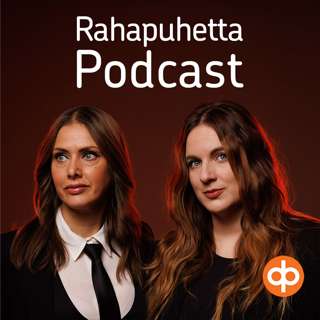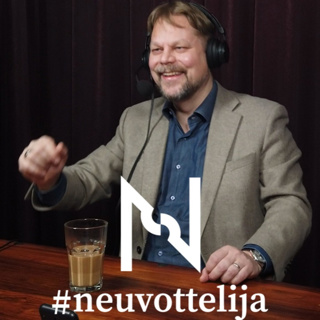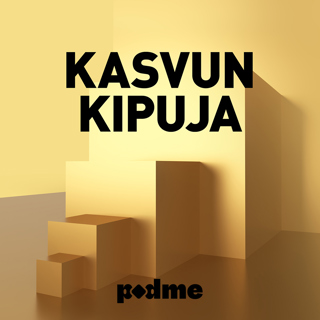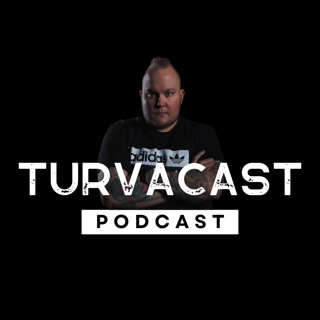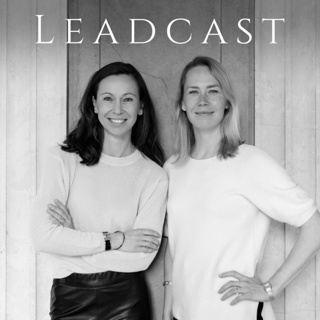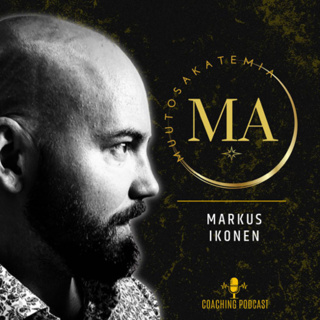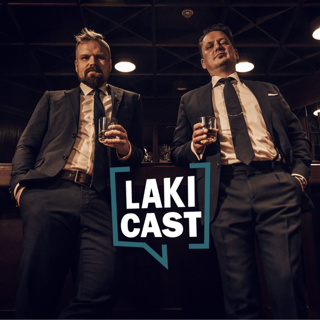
Finding and losing product-market fit with Allard Buijze
This week on The Business of Open Source, I talked with Allard Buijze, the CTO and founder at AxonIQ. We talked a lot about the importance of open source for getting feedback on your product and validating your idea — or not. One of the things we talked about was how the beginning of AxonIQ was tied to the same consultancy that developed Spring Source; Rod Johnson, the founder and CEO of Spring Source was on the podcast a couple months ago and you can listen to that episode here. We talked about: Spinning the company out of the an established company, and in particular how Allard ended up becoming co-founders with his former boss, and got buy-in from their previous employer to found the company after the open source project took open. How they underestimated some elements of human psychology around sunk costs and how it would impact people’s willingness to move from the open source project to the paid productWhy they originally had two products, and then decided to merge them into one single productHow the key turning point for the company was when a new salesperson joined the company and convinced them to quadruple the prices; the result was both an increase in revenue per customer but also an increase in the number of customers. How they evaluated the success of the decision to consolidate the two products into one. How product market fit is a journey, not a destination. How each individual hire can impact the way your product and project is perceived in the world; and it’s important to get alignment on what people are saying. The importance the avoiding confusion among potential customers***Are you leading an open source company and struggling with product strategy? I will help you improve the quality of your conversations, so people understand your product sooner, remain more engaged in the conversation and understand the relationship between your product and project. Learn more here.
25 Syys 202444min

Friendly Competition within the ClickHouse Ecosystem with Robert Hodges
This week on The Business of Open Source, I spoke with Robert Hodges, CEO of Altinity. This is a great example of an open source company that is built on top of an open source project, ClickHouse, that they did not create and still do not have direct control over. Altinity has created and maintains other open source projects in the ClickHouse ecosystem as well, but So many things to unpack with this episode, but a couple I want to call attention to in particular. The origin story of how Altinity’s founder discovered Clickhouse (he did not create it!). I love how Robert specifies that Alexander Zaitsev, one of the Altinity co-founders, discovered ClickHouse because he wasn’t happy with how the database he was using scaled — and by the way, it had nothing to do with how much the database cost. Great example of an open source project winning because it provided superior value, not because it was/is free. Making product strategy decisions based on who the ideal user and the ideal customer is. Robert talked about how Altinity didn’t contribute a particular high-security feature back to open source ClickHouse because while it’s something that very security-conscious organizations would want, for an open source users who doesn’t have major security and compliance requirements it would be confusing and create a worse user experience. Working in friendly competition with the 10 or so other companies that are building around ClickHouse, and how this is one of the unique things about working around open sourceHow Altinity’s customers tend to value the four freedoms of open sourceAre you a leader of an open source company and you’re struggling to prioritize your product roadmap in a way that reinforces your differentiated value… reach out. I help companies figure out the differentiated value of their product and product, where to put the line between the two, and how to use that information to prioritize your roadmap, build a sales narrative and communicate with your market.
18 Syys 202442min

Feature prioritization and customers' perceived value with Brad Micklea and Jesse Williams
This week on The Business of Open Source, I spoke with Jesse Williams and Brad Micklea, co-founders of Jozu and each with a long history of experience in various open source companies behind them. Even though Jozu is young, there was a lot to learn from these two and their experience in both open source and non-open source businesses. We talked about open source and not open source from CodeEnvy, Red Hat, AWS and Docker. “It’s very hard to get a sustainable open source project if you don’t have a company behind it paying those developers to work on it.” Some things we talked about: Why it’s important to focus on ‘what people get” instead of ‘what you give people.’ This is a fundamental component of effective product strategy and understanding your value prop: You can’t just talk about about the features you’re delivering; you have to connect that and focus on the value that people get from using the product. Jesse talked about the wizard behind the curtain that makes open source projects drive commercial adoption and revenue. You must be able to communicate the additional value of the commercial product; otherwise you will run the company into the group.Many open source companies get taken hostage by the open source community and end up having trouble monetizing because they make give away value in a way that is not sustainable.Users — and especially customers — are often unwilling to commit to a project if they are not convinced that the business behind it is healthy and has a sustainable business model. Open source, open standards and open governance — the relationship between the three and why we should all talk more about open standards and open governance in the open source ecosystem. The importance of really thinking through why you are open sourcing something, something that many companies don’t think through. We wrapped up the conversation talking about how difficult it is to figure out which features to prioritize — and that this is a really hard decision for any startup. This is a big part of my shift to focusing on product strategy in my consulting. If you’re an open source startup struggling with product prioritization and strategy, check out my product strategy offering.
11 Syys 202445min

The Importance of Clear Frameworks for Product vs Project with Jimmy Zelinskie
This week on The Business of Open Source, I spoke with Jimmy Zelinskie, co-founder and CPO of Authzed, which is behind SpiceDB. We kicked off the discussion with a really interesting discussion about whether or not SpiceDB is a database and whether or not Authzed is a database company. At first they didn’t see it that way, but as soon as they started leaning in on describing the product as a database, the more successful they were at getting people in their community to quickly understand what they did and how to use it. But it wasn’t just important for adoption: Once the team realized they were a database company, the business model they should follow seemed obvious, and they could make product decisions without stepping on anyone’s toes. Some topics we covered: How positioning SpiceDB as a database, and Authzed as a database company, helped everything else fall into place, from growth to product strategyWhy people often do want to avoid self-managing critical infrastructureThe difference in ideal user profile and ideal customer profilesHow transparency is the biggest benefit that Authzed gets from having an open source project. How the decision to release an open source project was a direct consequence of positioning the technology as a database.Why it is extremely important to have a decision-making framework for deciding what features will go into the open source or the proprietary features, that is communicated throughout the companyWhy open source companies need to consider the open source users and communities as one of their stakeholders that needs to be represented in strategic discussionsIf you’re the founder of an open source company — or you know anyone who is — and you don’t have a good framework for making product decisions or struggle to communicate internally and externally what the difference between project and product is, I can help you figure that out. Here’s more information.
4 Syys 202444min

Product market fit for project and product with Galeal Zino
This week on the Business of Open Source I had Galeal Zino, CEO and founder of NetFoundry, which creates OpenZiti. One of the most interesting things about the this conversation was the conversation about how to balance whether you’re promoting the product or the project. I talk to a lot of founders who assume that because you have both, you have to promote both. The same goes for SaaS and onprem options — some people think that just because you offer both, you have to build a go to market function for both. This topic came up in the conversation with Joe Duffy as well — in their case, it was the opposite, though. Pulumi started with both open source and commercial product, but put all the emphasis on the open source project for the first two years. Some of the interesting takeaways from this episode: Even though there was no “GTM” focus on the open source project at the beginning, it still had business benefits to NetFoundry, because it made prospects more comfortable that they wouldn’t disappear overnightHow building an open source company is more difficult, because you end up supporting multiple products. But it also can build a flywheel of innovation that you just can’t get any other way. Do you have to get product market fit twice? We had a long conversation about whether or not you have to get product market fit twice in open source companies. We also talked about testing ideas and business models in the actual market, and how lessons learned in other businesses can influence how you approach you take even with open source companies. Thank you for listening! PS: I’m changing my consulting offerings slightly, to focus on product strategy instead of positioning. And I’m looking for beta clients while I figure out exactly what the offering looks like. So if you’re an open source company and you’re looking for a clear product vision, a better understanding of how your product + project are differentiated and how to build that into your roadmap, reach out.
28 Elo 202437min

Complicated pricing and competition against the big players with Raphael Michel
Pretix founder and CEO Raphael Michel has a completely different philosophy about what he is building compared to the big players in the event / ticketing platform space. We had a great conversation this week about Pretix, how Pretix is positioned compared to big players, and who care about the fact that Pretix is an open source company. Some takeaways: Pretix is a small company, but Raphael feels like it is able to have a much broader feature set than the big players like EventbriteI think of Pretix and Eventbrite as competitors, but Raphael was able to very easily tell me the difference between Pretix and Eventbrite, how that stems from a different philosophical stance about what they are buildingIt took five years for Pretix to hire one person, about 10 years after starting Pretix there’s about 20 people on the teamAbout 20% of people care about the fact that Pretix is open source, and 80% don’t care. But those who do care, care a lot. Figuring out who cares about open source and who doesn’t depends on the target market and can be trickier than you would expect. Even though SaaS is the main business model for Pretix, they have an on-prem offer — and they have on-prem customer.How growth is a huge challenge, both for the company growing and for the customers and partners, because it becomes more challenging to get support.Notice how clear Raphael was about Pretix’s positioning, and how it was different from the big players in the event space. Are you that clear on how your software is different from competitors? Do you have a clear point of view, like Raphael, that sets you apart from the rest of the eocsystem? If not, you might want to work with me.
21 Elo 202440min

Creating an ecosystem with Ashraf Samhouri
This week on the The Business of Open Source, I spoke with Ashraf Samhouri, the CEO and co-founder of Activepieces. Activepieces didn’t start as an open source company — and we started out the conversation by talking about why it was important to take an open source route because Activepieces is building an ecosystem. Some other highlights from the episode: Making software that is both for technical users (engineers love Activepieces!) and non-technical users (who also love Activepieces, because the UI is good)Understanding the different user types, and marketing to them separately and specifically. I challenged Ashraf to tell my why Activepieces is better than Zapier even without the open source piece — it was a challenge, but he made a good argument about having a simpler interface as well as that Activepieces allows you to run on-premWe talked about product led growth and how there is an obvious starting point for promoting an open source projectWhy lead qualification is so importantIf you’re the founder of an open source company and you’re struggling with your open source strategy, with your positioning of your product or project in the ecosystem or with communicating that value of your product and project, reach out — that’s what I help companies with.
14 Elo 202435min

Testing 17 different income streams with Per Ploug Krogslund
This week on The Business of Open Source, I spoke with Per Ploug Krogslund, who is currently senior director of developer programs at Docker, and who previously had a number of experiences at the intersection of open source and business. He founded and ran an open source company, Umbraco, for many years, and also led the Open Source Program Office at Spotify. We had a wide-ranging conversation about open source businesses. Some of the topics we covered:What is the right size for an open source business? How do we make space in the conversation about open source businesses for the companies that will never become billion dollar unicorns? The tension, both internal and external, around building open source software and building a company. We talked about this in the context of Umbraco and in the context of Docker — most fascinating to me was that Per felt like as soon as Umbraco had figured this out, it wasn’t as interesting for him to keep working on the company. Why hasn’t there been an “enterprise Backstage” company to spin out of Spotify? We also revisited the question of Microsoft and open source, because Umbraco is an open source company built on a Microsoft stack at a time when Microsoft was publicly hostile to open source. What should you take away from this conversation? There are plenty of opportunities to build small-to-medium size companies around open sourceYou might have to try a lot of different ways to monetize. Per said he felt like Umbraco tested 17 different income streamsThere will be a tension, both internally and externally, about how much to open source. This is part of the game; you have to figure out how to manage this tension but might never feel like you get it perfect. If you’re listening and want help on your open source strategy, finding the right balance between open source and income streams and figuring out what those income streams should be, reach out to see if it might be a good fit for us to work together.
7 Elo 202442min












